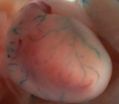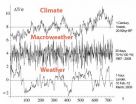(Press-News.org) Almost all women experience some nausea or vomiting when pregnant. Approximately one out of every hundred suffers from acute nausea during pregnancy (hyperemesis gravidarum) and may need hospital treatment to restore hydration, electrolytes and vitamins intravenously.
"At worst, women may die if they go untreated. Many women find that the condition has an adverse effect on their work and family lives," states Åse Vikanes, senior researcher at the Norwegian Institute of Public Health and specialist in gynaecology and obstetrics.
Making up for insufficient research activity
Hyperemesis came under the spotlight earlier this winter when Kate, the Duchess of Cambridge, was hospitalised because of it.
But research projects on this illness have been few and far between. When Dr Vikanes completed her doctoral degree in 2010 with funding from the Research Council of Norway, her thesis was the first in this field in Norway in 70 years.
"This is a relatively common affliction among women and even so it has been difficult to win understanding for the need for research. Not too many years ago, people sincerely believed that the cause could be the woman's subconscious rejection of the child and the child's father. The attitude in part has been that the pregnant woman needs to pull herself together," Åse Vikanes explains.
The real cause behind severe nausea during pregnancy remains unknown and looks to be complex. But there is little to support the idea that the explanation is psychological.
Both hormones and genetics involved
Several studies have shown that elevated levels of oestrogen and the pregnancy hormone, human chorionic gonadotropin (hCG), may be involved. The likelihood is that hormonal, genetic and socio-economic factors all play a part.
In her doctoral project, Åse Vikanes demonstrated that there is wide ethnic diversity in the occurrence of hyperemesis. In addition, the risk is higher among women whose mothers suffered from the syndrome. Non-smokers with a BMI that is higher or lower than the norm also show a higher tendency to experience severe nausea during pregnancy, whereas smoking appears to provide protection from the nausea.
The occurrence of hyperemesis also varies with the mother's age and the gender of the foetus, with younger mothers carrying baby girls at the greatest risk.
Nutrition and physical activity part of the picture
Dr Vikanes and her colleagues are now working to identify more risk factors linked to hyperemesis and to examine possible consequences of the condition on mother and child. Recent research has actually shown that the mother's diet during pregnancy may be significant to the health of the child later in life.
Dr Vikanes is also involved in projects examining the impact of nutrition, physical activity and what can be referred to as "candidate genes". Candidate genes are genes that may cause an individual to be predisposed to illness – in this case, hyperemesis.
"We need to learn more about this so we can help women who suffer from this condition to get better treatment," Dr Vikanes concludes.
### END
When morning sickness lasts all day
2013-02-26
ELSE PRESS RELEASES FROM THIS DATE:
Blood vessels 'sniff' gut microbes to regulate blood pressure
2013-02-26
Researchers at The Johns Hopkins University and Yale University have discovered that a specialized receptor, normally found in the nose, is also in blood vessels throughout the body, sensing small molecules created by microbes that line mammalian intestines, and responding to these molecules by increasing blood pressure. The finding suggests that gut bacteria are an integral part of the body's complex system for maintaining a stable blood pressure.
A description of the research, conducted in mice and test tubes, appeared online Feb. 11 in the journal Proceedings of the ...
Cell discovery could hold key to causes of inherited diseases
2013-02-26
Fresh insights into the protective seal that surrounds the DNA of our cells could help develop treatments for inherited muscle, brain, bone and skin disorders.
Researchers have discovered that the proteins within this coating – known as the nuclear envelope – vary greatly between cells in different organs of the body.
This variation means that certain disease causing proteins will interact with the proteins in the protective seal to cause illness in some organs, but not others.
Until now scientists had thought that all proteins within the nuclear envelope were the ...
Afterschool programs evaluated for community support, resources
2013-02-26
UNIVERSITY PARK, Pa. -- Afterschool programs seem to be most effective when their organization and implementation is supported by both organizational and community resources, according to Penn State human development researchers.
Using a tool to help bridge the gap between research and real life, the researchers evaluated an afterschool program called the Good Behavior Game.
"The Interactive System Framework for Dissemination and Implementation is the tool that helps us to bridge research and practice by synthesizing the available research and figuring out what it ...
In probing mysteries of glass, researchers find a key to toughness
2013-02-26
New Haven, Conn. — In a paper published online Feb. 26 in the journal Nature Communications, a Yale University team and collaborators propose a way of predicting whether a given glass will be brittle or ductile — a desirable property typically associated with metals like steel or aluminum — and assert that any glass could have either quality.
Ductility refers to a material's plasticity, or its ability to change shape without breaking.
"Most of us think of glasses as brittle, but our finding shows that any glass can be made ductile or brittle," said Jan Schroers, a professor ...
Connecting the (quantum) dots
2013-02-26
PITTSBURGH—Recent research offers a new spin on using nanoscale semiconductor structures to build faster computers and electronics. Literally.
University of Pittsburgh and Delft University of Technology researchers reveal in the Feb. 17 online issue of Nature Nanotechnology a new method that better preserves the units necessary to power lightning-fast electronics, known as qubits (pronounced CUE-bits). Hole spins, rather than electron spins, can keep quantum bits in the same physical state up to 10 times longer than before, the report finds.
"Previously, our group ...
American Chemical Society podcast: New super-nutritious puffed rice for breakfast cereals, snacks
2013-02-26
The latest episode in the American Chemical Society's (ACS') award-winning Global Challenges/Chemistry Solutions podcast series reports a new process for blowing up grains of rice to produce a super-nutritious form of puffed rice, with three times more protein and a rich endowment of other nutrients. That makes it ideal for breakfast cereals, snack foods and nutrient bars for school lunch programs.
Based on a report by Syed S.H. Rizvi, Ph.D., and colleagues in ACS' Journal of Agricultural and Food Chemistry, the new podcast is available without charge at iTunes and from ...
Persistent negative attitude can undo effectiveness of exposure therapy for phobias
2013-02-26
COLUMBUS, Ohio – Because confronting fear won't always make it go away, researchers suggest that people with phobias must alter memory-driven negative attitudes about feared objects or events to achieve a more lasting recovery from what scares them the most.
Ohio State University psychology researchers determined that people who retained negative attitudes about public speaking after exposure therapy were more likely to experience a return of their fear a month later than were people whose attitudes were less negative. The fear returned among those with unchanged attitudes ...
Kauai, the Petrified Forest, Costa Rica, and more: New GSA Bulletin articles now online
2013-02-26
Boulder, Colo., USA – New GSA Bulletin articles cover wind erosion and sediment traps in the Qaidam basin; rain erosion on Kauai; new insights from the Petrified Forest, USA; a forearc sliver in Costa Rica; Quebec's St. Lawrence rift system; a new model for the development of Ries Crater Lake, Germany; bending and buckling mountain belts; a record of 22 large earthquakes in northern Fiordland, New Zealand; and the evolution of the ancient Montana landscape.
GSA BULLETIN articles published ahead of print are online at http://gsabulletin.gsapubs.org/content/early/recent; ...
Novel combination therapy shuts down escape route, killing glioblastoma tumor cells
2013-02-26
February 26, 2013, New York, N.Y. and San Diego, Calif. – Glioblastoma, the most common and lethal form of brain tumor in adults, is challenging to treat because the tumors rapidly become resistant to therapy. As cancer researchers are learning more about the causes of tumor cell growth and drug resistance, they are discovering molecular pathways that might lead to new targeted therapies to potentially treat this deadly cancer.
Scientists at the Ludwig Institute for Cancer Research in San Diego worked collaboratively across the laboratories of Drs. Paul Mischel, Web Cavenee ...
Macroweather is what you expect
2013-02-26
While short-term weather is notoriously volatile, climate is thought to represent a kind of average weather pattern over a long period of time. This dichotomy provides the analytical framework for scientific thinking about atmospheric variability, including climate change.
But the weather-climate dichotomy paints an incomplete picture – one that may be complicating efforts to untangle natural variations in climate from man-made effects, according to McGill University physics professor Shaun Lovejoy. In a paper published recently in the journal Eos, Transactions, American ...

